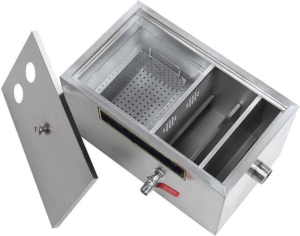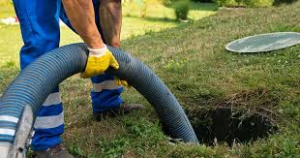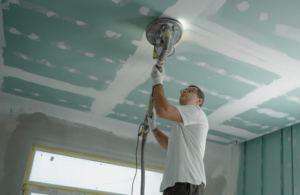Plumbers install, repair, and maintain the pipes that carry water, gas, and waste in residential and commercial settings. They often work with customers to understand their plumbing needs and provide recommendations on plumbing solutions.
They also collaborate with other professionals, such as construction teams and architects, to ensure that plumbing systems integrate seamlessly into building projects. They must have strong customer service skills to interact with clients. Click the https://www.proplumbersauroraco.com/ to learn more.

Plumbers perform a variety of tasks that include installing, repairing, and maintaining pipes, valves, fittings, and fixtures in residential and commercial settings. They also perform routine inspections to identify problems and violations of plumbing codes. Plumbers often work with other professionals, such as electricians, carpenters, and painters. Plumbers must have strong communication skills to collaborate effectively with others.
Plumbing is a career that can provide stability and good pay. It also provides the opportunity to make a difference in people’s lives. However, it is important to understand the demands of the job before pursuing this career path. Plumbers must be able to perform physically demanding work, including heavy lifting and working in tight spaces. They must also be able to stand for long periods of time and use hand tools.
Some of the key responsibilities of plumbers include reading and interpreting blueprints, preparing lists of materials and supplies, and estimating costs. They may also be responsible for performing a wide range of maintenance duties, such as cutting, welding, and assembling pipes. In addition to these duties, plumbers may also be responsible for inspecting and testing plumbing systems.
Another key aspect of a plumber’s job is troubleshooting. They must be able to diagnose a problem based on a customer’s description or their own inspection and come up with effective solutions. This requires strong analytical thinking and a willingness to experiment with different solutions. Plumbers must also be able to work well under pressure and meet strict deadlines.
Plumbers are also often required to travel to client sites to repair or install plumbing. This can be a challenging part of the job, but it is also an opportunity to build relationships with customers and learn about new construction projects. Plumbers must be comfortable interacting with clients and explaining complex technical issues in simple terms.
Finally, plumbers must be able to follow plumbing building codes and regulations. This is an important part of their job, and it ensures that they do high-quality work that meets safety standards. It also helps them avoid legal complications and keep their clients satisfied.
Education and Training Requirements
The first step toward becoming a plumber is obtaining the appropriate educational qualifications. In most cases, this will require a high school diploma or GED certificate and completing a vocational training program that includes introductory plumbing courses as well as more advanced classes in physics, chemistry, and blueprint reading and drafting. Additional education options can include plumbing classes that focus on safety and code compliance, and specialized courses in plumbing techniques, water treatment systems, and various types of pipes and fixtures.
Once you have completed your educational requirements, it’s important to gain practical experience by working for a plumbing contractor or construction company. This phase will help you refine your technical skills, learn more about the plumbing industry, and understand how to work with customers. It’s also a great time to network with other plumbing professionals, as it can open doors to future job opportunities.
Another way to get hands-on experience in the field is through a plumbing apprenticeship. These programs can be found in most cities and states, including New York. Apprenticeships allow you to work alongside a more experienced plumber and learn the ins and outs of the trade. Many apprenticeship programs also provide classroom-based training in a variety of topics, such as plumbing basics, tool usage and repair, drainage, waste and venting, plumbing system design, and household and industrial maintenance.
After gaining practical experience, you can apply to become a licensed plumber in your state. You’ll typically need to pass a written exam and complete a background check before being awarded your license. Additionally, many states require that plumbers complete continuing education courses to keep up with advances in technology and new safety protocols.
As a licensed plumber, you can take on more complex projects and earn higher pay rates than unlicensed plumbers. In addition, you’ll have access to a wider range of resources and support that can make running your own plumbing business much easier. You can find more information about becoming a plumber in your area by visiting the website of your local licensing authority. Many of these websites will also offer helpful tips for preparing for your licensing exam.
Work Environment
The plumbing industry is a large field with many different options for career paths and specializations. Many plumbers choose to complete a formal apprenticeship to gain on-the-job experience and learn the trade from experienced professionals. Some plumbers also choose to attend a vocational school or technical college to obtain the skills and certifications they need for this demanding profession. Regardless of the path you take, the demand for skilled plumbers is always high and there are plenty of opportunities to find work in this sector.
As a plumber, you will be responsible for the installation and repair of water supply systems, drainage systems, and waste disposal systems in residential, commercial, and industrial settings. Your duties may also include the maintenance and replacement of pipes, fixtures, appliances, and other components. You will often need to troubleshoot problems and perform diagnostic tests to identify issues with complex plumbing systems.
You will also need to communicate with customers to understand their concerns and provide advice on the best plumbing solutions for their needs. You may also need to prepare and submit cost estimates for projects and ensure that customers are satisfied with the completed work. Additionally, you will likely need to collaborate with other construction teams and engineers to ensure that plumbing systems are integrated seamlessly into building projects.
Plumbers often need to work on emergency services as well, so they will need to be available at all times for calls involving burst pipes or clogged drains. This means that you will need to be willing to work odd hours and travel between jobs. Additionally, you will need to be physically able to stand for long periods of time and lift heavy equipment.
In addition to the responsibilities described above, you will also need to keep up with changing plumbing codes and regulations in your area. You will also need to have excellent problem-solving skills and the ability to read blueprints and other documents in order to properly plan and execute plumbing projects. Plumbers also need to be able to think critically in order to weigh the pros and cons of various plumbing solutions and determine which is the most effective for each situation.
Salary
A plumber’s salary varies widely depending on the location, level of experience, and certifications. A licensed journeyman plumber, for instance, can earn up to $50 an hour. In contrast, a master plumber can command much higher wages. The cost of living in a given area also affects how much a plumber can earn.
For example, New York City plumbers can make over $150 per hour. They typically charge time and a half on weekends and holidays, and the rate is even higher for emergency services. These rates are often based on the complexity of the job and whether it is residential or commercial. The price of materials also plays a role in the final bill.
In addition, many states require plumbing professionals to be licensed in order to work in the industry. These licenses may include a certification in waterworks or plumbing systems, a test for competency, and an interview with the state’s licensing board.
Plumbers can advance in their careers by earning additional certifications or moving to a different field. For example, plumbers who are experts in gas installations can increase their salaries by becoming certified in that specialty. They can also move to a more lucrative area or become a plumbing manager, overseeing large projects and teams of plumbers.
Other career options for plumbers include becoming a plumbing engineer or a plumber’s foreman. A plumbing engineer designs a building’s water supply system, while a plumber’s foreman manages a team of plumbers on a construction project.
Some plumbers also choose to repair plumbing equipment instead of installing new ones. These plumbers can make up to $25 an hour, or more depending on the type of equipment they service and how quickly they can fix it.
Some plumbers choose to join a union. This can be beneficial to their career because it gives them access to jobs that aren’t advertised, and they usually receive a higher wage than non-union plumbers. However, it’s important to note that some unions take a cut of the plumber’s salary in order to cover membership fees and other expenses.








